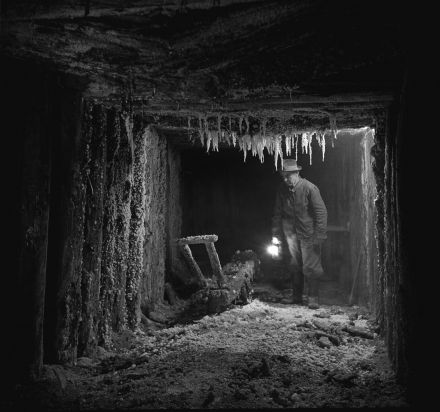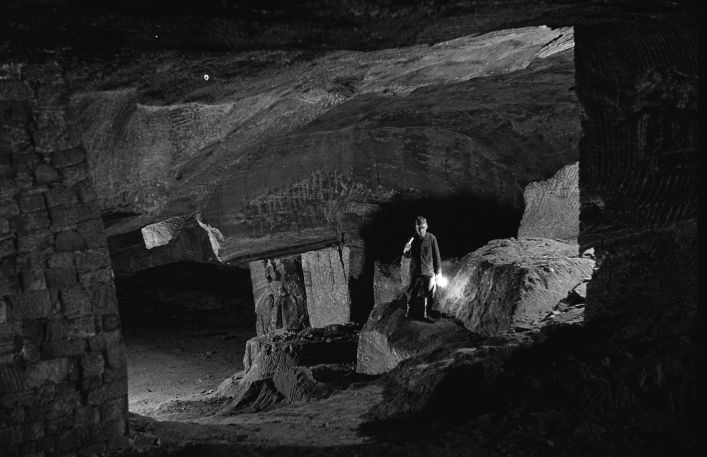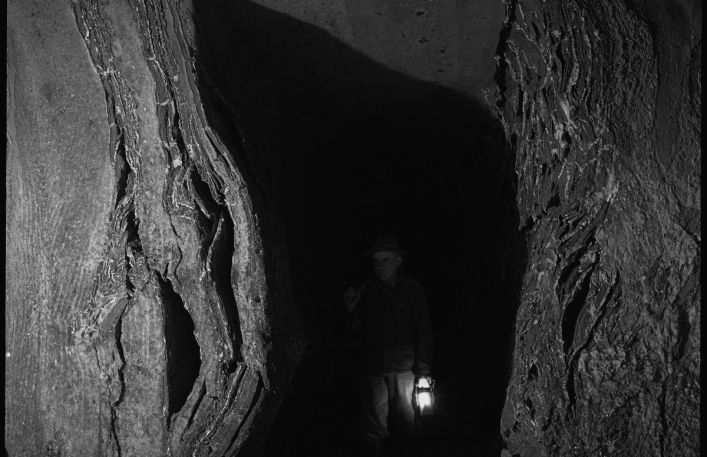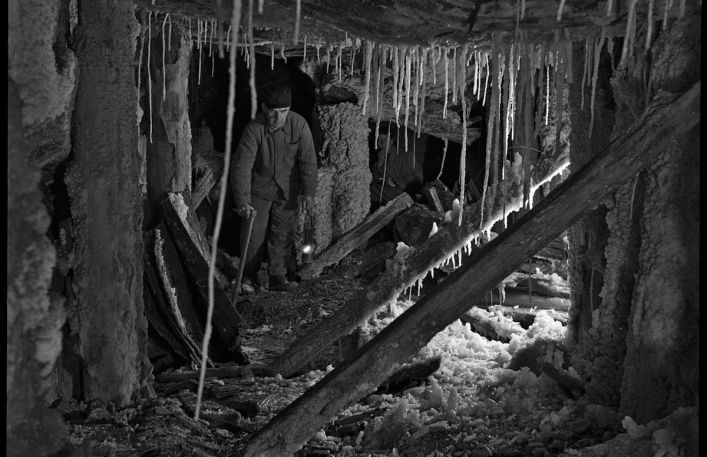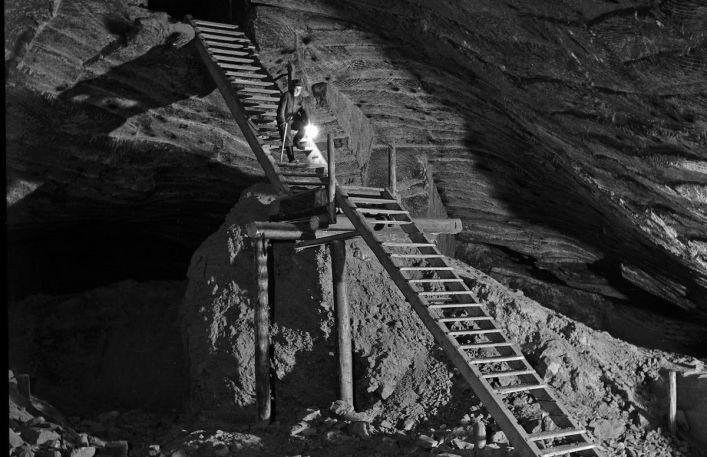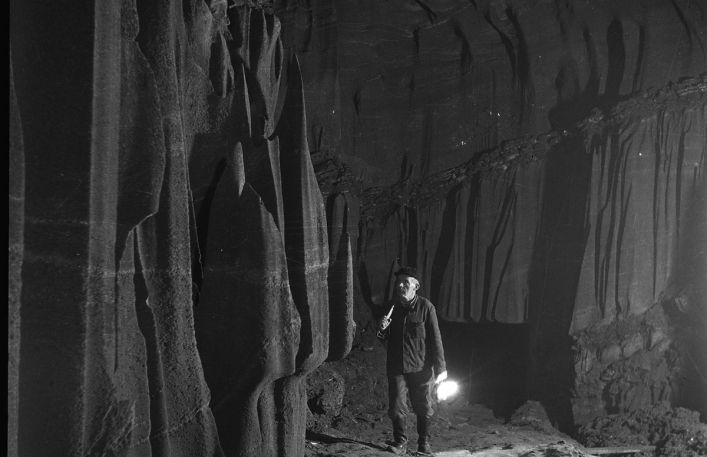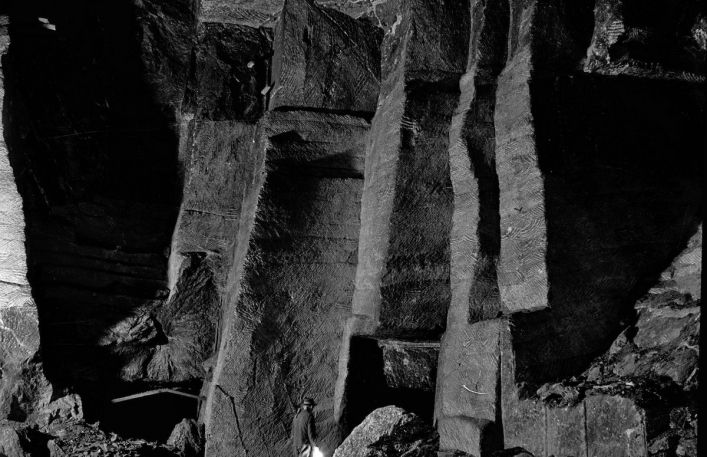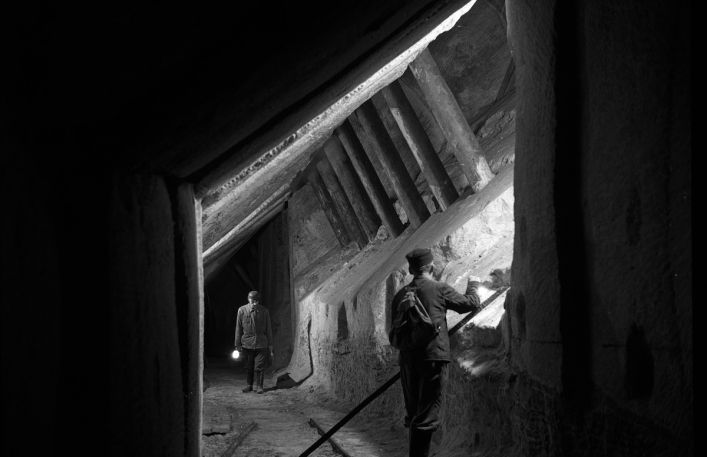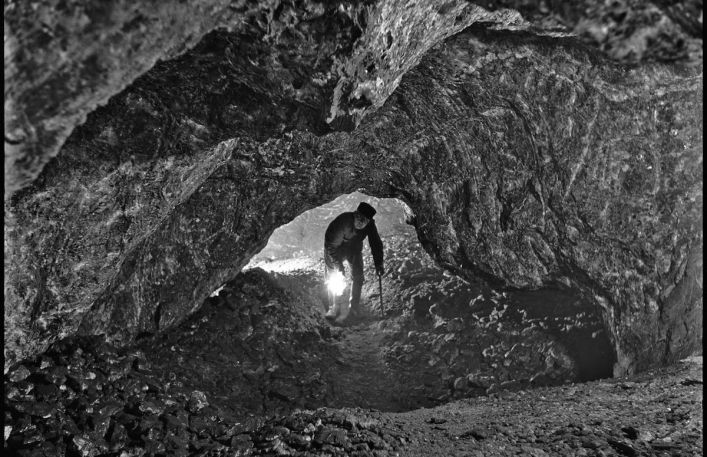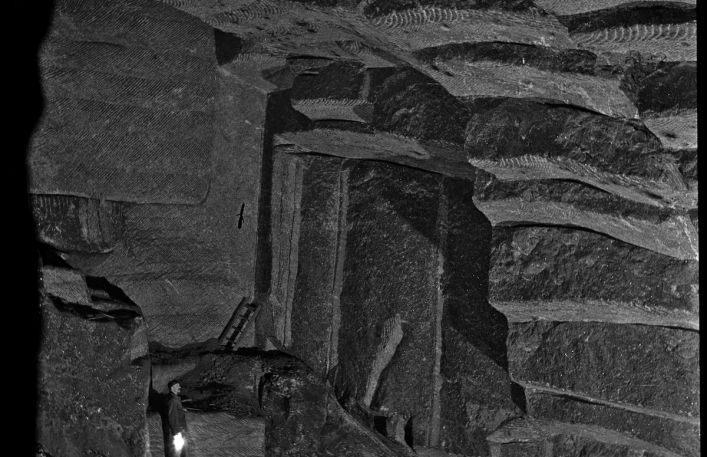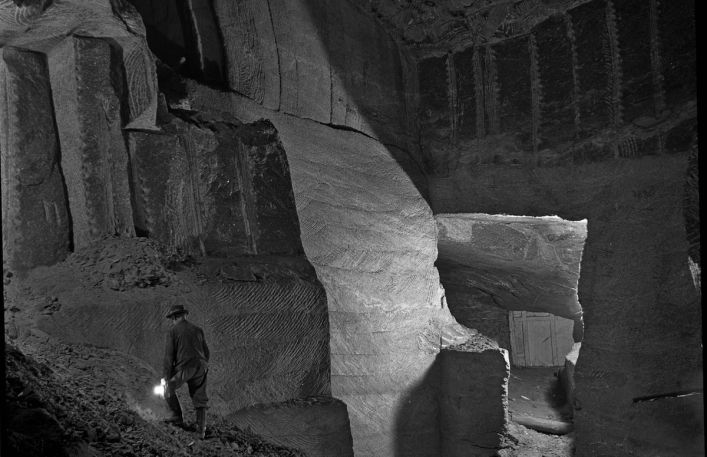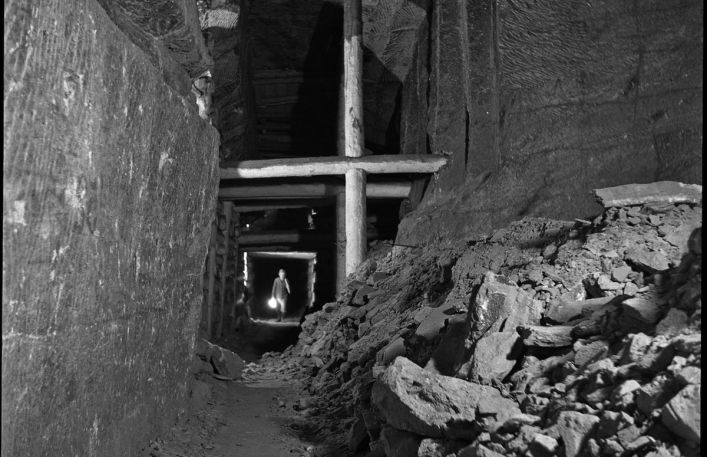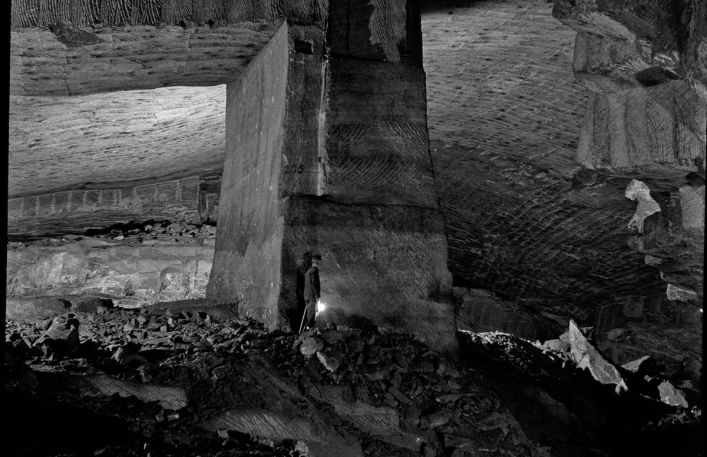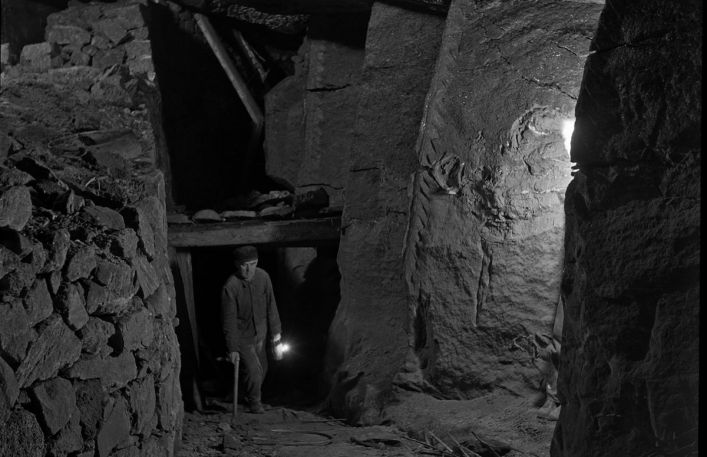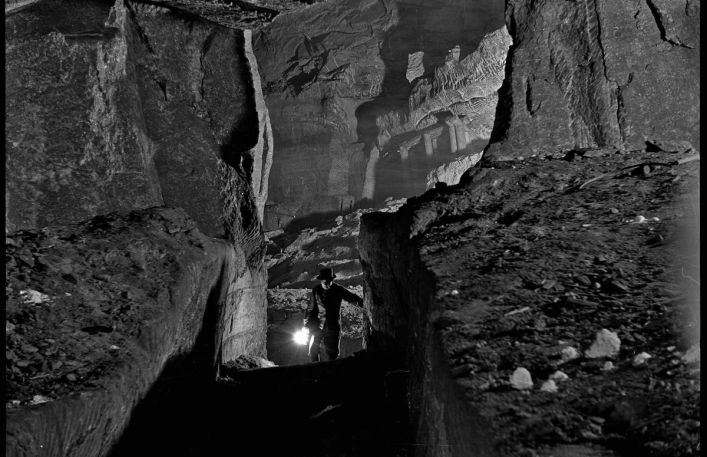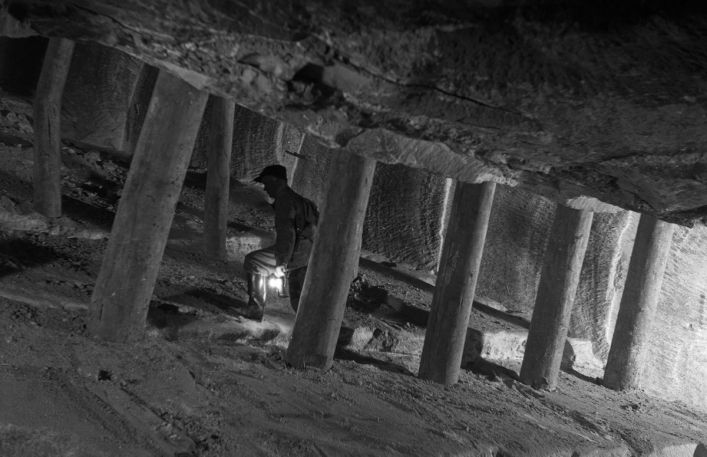The Cracow Saltworks Museum Wieliczka was founded in 1951, and fifteen years later officially made available to visitors its underground exhibition on the third level of the salt mine. Both of these events would not have happened had it not been for the determination and great passion of Wieliczka painter, photographer, teacher and museologist: Alfons Długosz.
Alfons Długosz was born in 1902 in Trzebionka near Chrzanów, while in 1915-1923 he studied in Berlin and Dresden. At the beginning of World War II, he came to Wieliczka, where he lived until his death in 1975. From the beginning he made himself known to the local community as a culture animator: during the occupation he organized puppets in his apartment, and in 1946-1949 he was actively involved in educational activities among miners. It was the cooperation with the mine that made Długosz notice something very disturbing: the gradual devastation of underground monuments. The then management of the mine planned to backfill the abandoned excavations.
1949 mine penetration
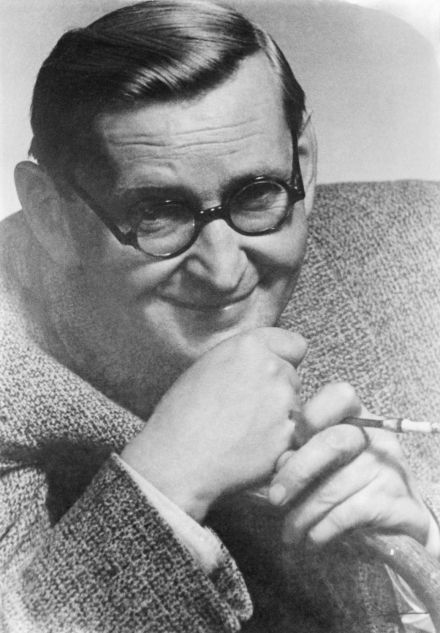
... terrified of what I noticed, I decided to help save the priceless monument. (...) I was aware that considerable effort awaited me. I had no funds, all my capital was my own hands and a lot of good intentions. However, I started to work with passion. (...) With a joint effort from the underground labyrinth of collapses, abyss and rightful logs, we ripped out ancient, abandoned or forgotten work tools, bizarre machines and devices from centuries ago. We collected them carefully in an underground chamber. - Alfons Długosz recalled a few years later
The authentic objects recovered in this way became the nucleus of the Wieliczka Museum and on December 2, 1951 they were exhibited at a small exhibition in the Warsaw Chamber.
1966 opening of the Museum Route
